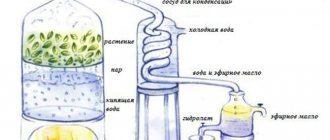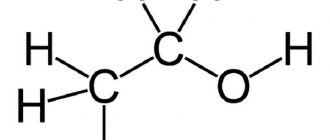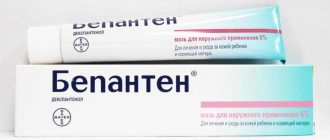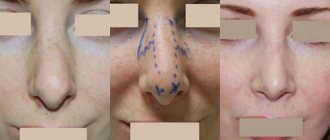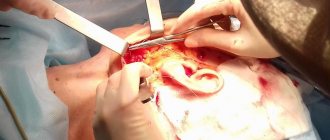Compression stockings for operations protect the body from blood clot formation
Any operation is a health risk due to interference with the functioning of the body. But even if it is successfully carried out, the danger still does not go away. The formation of a blood clot and sudden blockage of a vessel by it threatens life. But even if it is successfully carried out, the danger still does not go away. The formation of a blood clot and sudden blockage of a vessel by it threatens life. In our material we will talk about hospital knitwear - compression stockings for operations. And also why this product prevents the possibility of blood clot formation.
What happens to the veins after surgery
In the first days after surgery, the patient lies down most of the time. Low mobility leads to a decrease in blood flow speed and, as a result, to an increase in blood viscosity. There is a possibility of a blood clot forming in the muscle sinuses of the leg.
Approximately on the second to fourth days after the operation, the patient’s condition improves, he begins to get out of bed and walk a little. Thanks to the movement, the pressure in the vessels increases, blood circulation increases. If a blood clot has already formed, there is a danger that it will break off and begin its movement upward, towards the heart and pulmonary artery. Sudden blockage of a pulmonary artery vessel by a thrombus can be fatal. An additional danger is varicose veins, which can form due to the patient’s low mobility.
Compression classes
There are four classes of compression of therapeutic knitwear:
- Class 1 (18-21 mmHg). Indicated for patients with persistent swelling and pain in the legs, telangiectasia, and reticular varicose veins.
- Class 2 (23-32 mmHg). Used for thrombophlebitis and varicose veins. And also after some surgical interventions.
- Class 3 (up to 42 mm Hg). It is used for lymphovenous insufficiency, DVT of the lower extremities, varicose veins with trophic disorders. Class 3 compression underwear is usually prescribed after endoprosthetics.
- Class 4 (over 49 mmHg). Used for congenital vein anomalies, lymphedema.
The class of compression garments is selected by the doctor, depending on the patient’s condition and treatment goals.
Compression stockings for operations and childbirth →
See all
- Leader
Anti-embolic stockings Thrombexin 18 914
In stock
2,300 rub.
Buy
Code: 007853
medi, Germany
- Leader
Anti-embolic stockings Luomma Idealista 1 class ID-380
In stock
1,600 rub.
Buy
Code: 007848
LUOMMA IDEALISTA, Russia
- Leader
Anti-embolic stockings Luomma Idealista class 2 ID-380
In stock
RUR 2,400
Buy
Code: 010517
LUOMMA IDEALISTA, Russia
In stock
RUB 1,550
Buy
Code: 012636
LUOMMA IDEALISTA, Russia
In stock
RUB 3,950
Buy
Code: 007851
medi, Germany
In stock
from RUR 2,805
Buy
Code: 007854
TONUS ELAST, Latvia
In stock
RUB 1,925
Buy
Code: 007847
ERGOFORMA, Italy
In stock
RUB 1,710
Buy
Code: 007846
ERGOFORMA, Italy
- 20% discount
Anti-embolic PCI stocking up to the thigh, class 2, circular knit
In stock
550 rub. from 440 rub.
Buy
Code: 007862
LPP FARM, Russia
In stock
390 rub.
Buy
Code: 007863
LPP FARM, Russia
Choosing the right size
Compression stockings must exactly follow the shape of your legs, because the success of their use depends on this. The size of the underwear is selected individually, taking into account anatomical features. Please note that for each model, manufacturers create a separate size chart.
When selecting linen, take into account:
- ankle circumference;
- volume of the middle of the shin;
- girth under the knee;
- thigh circumference;
- length of the leg from heel to groin.
The model and size of compression stockings should be selected by a specialist.
Why should you wear compression stockings during childbirth?
In addition to surgery and hospital stay, indications for the use of hospital jersey are childbirth and the postpartum period. A few weeks before the baby is born, blood viscosity increases. This way the body protects itself from unnecessary blood loss during the birth process. And with low mobility of the woman in labor in the first days after childbirth, the blood thickens even more. This leads to the risk of blood clot formation. As a result, there may be a threat to life in the form of thrombosis or pulmonary embolism, which threatens the life of not only the mother, but also the child.
How to choose a postoperative bandage?
In order to select an Intex bandage, you need to take two measurements (in cm): waist circumference and hip circumference. Then you need to compare the measurements with the tabulated intervals. Let's assume that your waist is 76 cm and your hips are 105 cm. These measurements fit into the intervals corresponding to size 3 (M).
The width of the postoperative bandage depends on the location of the scar. A belt with a width of 22 cm is suitable for people below average height, 30 cm - for people above average height. By average we mean a height of 175 cm for a man, 165 cm for a woman.
Why is it important to purchase quality compression stockings for surgery?
High-quality hospital knitwear has advantages that make it easier for the patient to constantly wear it:
♦ special knitting technology creates a porous knitwear structure - the stockings are not hot due to optimal air exchange;
♦ the silicone elastic band for fixing the stocking on the thigh has a special indicator that serves to control the absence of obstruction to the venous outflow;
♦ the hole under the fingers allows you to control microcirculation during operations and childbirth;
♦ special technology facilitates the donning process;
♦ the absence of latex ensures hypoallergenicity.
During the rehabilitation period after surgery, little physical activity creates a risk of blood clot formation, so compression stockings are needed here
Surviving the operation safely is half the battle. Protecting health and life during the initial recovery period is the second part of successfully addressing this complex challenge. Hospital knitwear will help protect your body from varicose veins, thrombosis and pulmonary embolism.
The Ortix salons and online store offer a large assortment of manufacturers of hospital knitwear with a wide range of sizes.
How to choose a postoperative abdominal bandage?
What postoperative bandages are considered high quality? The postoperative bandage should fully relieve the postoperative suture and support the abdominal muscles, be comfortable to wear and not cause allergies. The postoperative Russian Intex bandage fits tightly to the abdomen, easing the load on the scar and abdominal muscles. The belt is made of durable, non-allergenic materials (latex, polyester, polypropylene - can cause allergic reactions of an individual nature), therefore it has a fine texture that allows you to wear the belt discreetly under clothing.
A lot of compression for lymphedema after cancer or how to create complications for 50+ thousand rubles?
Table of contents
Compression hosiery after cancer surgery
What does excessive compression lead to?
What did we do in case of complications from overcompression when the mistake had already been made?
What steps should you take if you have surgery for cancer?
How can you get our opinion regarding your specific situation?
Compression hosiery after cancer surgery
Case from practice. March 2022
The patient had surgery for cervical cancer several years ago. Several lymph nodes were removed. Previously, they knew nothing at all about lymphedema in Russia. Now the patient is immediately recommended to constantly wear high-class compression knitwear. Those who can afford it order it individually. It costs from 30 to 100 thousand rubles. And when the dollar jumped, it became even more expensive.
The patient is afraid that his leg will grow to an unsightly size and takes off his 3rd class only for the night. By morning there is minimal swelling somewhere in the foot. The patient puts the jersey back on. They also follow an “anti-lymphedema” diet; there are many publications on this subject (true and not so true): how excess weight is associated with lymphedema. And also: all the basic recommendations - legs up, special gymnastics. In general, a complete set “at home”. This goes on for a year, two, three... Everything seems fine, but...
The patient presents with a set of symptoms:
- A constant feeling of fullness in the legs, although there is no visual swelling.
- On the contrary, there is a pronounced decrease in the volume of the limbs against the background of a lack of motor activity. The girth of the legs is below normal, due to severe muscle wasting (a well-known expression is atrophy from inactivity). Weakness of the leg muscles.
- Flabby, sagging skin, despite young age.
- Constant parasthesia - a crawling sensation.
- Loss of skin sensation in the lower extremities.
- Pain when walking
Quite a lot of money has already been spent, the patient was even recommended to contact a completely “different specialist”, if you understand what we are talking about. There is no visible edema, but the patient insists on the symptoms as if it were stage 3 edema.
What does excessive compression lead to?
The patient arrived after a remote video consultation. It immediately became clear to us that degenerative-dystrophic changes had occurred in the tissues. But the patient came in just in time.
What happened? Imagine that they put a corset on you, forming a wasp waist. Let us remember the young ladies dancing at the ball. Why did they faint? During physical activity, the need for oxygen sharply increased, but the chest, compressed by the corset, could not increase the excursion of the lungs. A state of hypoxia developed, leading to loss of consciousness. Yes, the waist will be aspen, but vital organs will suffer chronically: the brain and lungs.
The fact is that in a state of complete compression - “vice” - outflow occurs not due to the actual function of the lymphatic vessels, but due to the forced squeezing of fluid from the tissues. As a result, hemo- and lymph microcirculation, necessary for normal metabolic processes, suffers.
So, the same thing happened in the tissues of the legs. They were constantly compressed by compression hosiery, like a corset. This led to chronic hypoxia, the accumulation of toxic products that must be eliminated by the lymphatic system.
Moreover, the entire vascular system: arteries, veins, lymphatic vessels cannot function adequately under conditions of constant compression.
But this is not enough; the nerve trunks, which are under constant compression, were also damaged, which further reduced the innervation of blood vessels and contributed to the accumulation of pathological metabolic products in the tissues. Hence the weakness of the leg muscles, which generally led to bed rest. The patient was forced to switch to remote work at home.
We took off the jersey and monitored the condition of the subcutaneous tissue and muscles, incl. using ultrasound.
We found lymphedema called fibredema - the subcutaneous tissue is sharply changed in the form of thickened swollen fibers, there is practically no free fluid. That is, despite the compression hosiery, lymphedema still occurred, but in a more complex form. That's not all:
- Constantly wearing compression hosiery caused muscle wasting and sagging skin.
- Chronic wearing of compression stockings led to neuropathic lymphedema due to impaired innervation of the lymphatic vessels.
- Constantly wearing compression hosiery led to disruption of hemo- and lymph microcirculation.
We assessed the lymphedema itself as the first stage. But there is not even a classification yet for assessing complications.
As a result, in this particular case, the complications from wearing knitwear for seven years are many times more significant than if “ordinary lymphedema” had developed, because it could have been successfully managed conservatively. It’s also cheaper than the cost of knitwear. In other words, improper prevention of lymphedema has given rise to several other diseases.
What did we do in case of complications from overcompression when the mistake had already been made?
We carried out the first course of treatment.
Our classic treatment for edema:
- Rehabilitation of microcirculation in tissues.
- Treatment of neuropathy.
- Treatment of chronic inflammation due to bacterial infection.
All this is drug treatment. No homeopathy or symptomatic therapy. We also learned exercises to safely restore muscle strength.
As a result, subjective sensations have improved, there is no classic “liquid” edema, and the condition of the subcutaneous tissue, according to ultrasound results, has improved.
Next, we will be in touch with the patient for the next three months. The sensations of neuropathy have not yet completely passed, but there is no serious edema in its classical sense.
Now the best tactic for the patient is to reconsider his behavior pattern and give the tissues time for natural regeneration. In this situation, we intend to conduct another course after 3-4 months.
Our advice: after operations for oncological diseases on the pelvic organs or on the mammary gland, choose the correct sequence of treatment for lymphedema.
What steps should you take if you have surgery for cancer?
- Make sure you have an adequate follow-up program for your underlying disease and have a personal oncologist.
- Assess the functionality of the lymphatic system: is there still swelling or not? Where and in what zones is it formed? How fast? Don't rush to order expensive knitwear. Do not waste money on lymphography: it is not needed for conservative management.
- Find out if chronic bacterial/viral infections are present: these can reduce the functionality of the lymphatic system and immunity.
- Remember, lymphovenous anastomoses, liposuction, and lymph node transplantation should be a last resort, and bandaging and massage can rather be classified as overrated symptomatic therapy. In addition, if there is even the slightest suspicion of underexamination or lack of recent control on oncological pathology, it is better not to take risks.
- If lymphedema has occurred, first try conservative restoration of lymphatic system functions. In most cases this is enough.
- If you have been prescribed compression, remember: it must be used in doses, starting with a low class and under the supervision of a specialist, and not once and for life.
The treatment of lymphedema itself should, according to indications, consist of several parts:
- Treatment of the transport function of lymphatic vessels
- Treatment of altered lymph nodes
- Restoration of hemo- and lymph microcirculation in tissues
- Treatment of neuropathy
- Treatment of fibrotic changes in tissues
- Treatment of infectious complications of lymphedema.
As you can see, we have revealed several more therapeutic measures that were discussed in our webinar and the Lymphatek method.
How can you get our opinion regarding your specific situation?
You can always send us your brief medical history and photographs of the condition of your hands or feet. We do not make a diagnosis or prescribe treatment, but we can first assess the indications for treatment specifically in your situation. The situation will be assessed by an oncologist who also treats patients with lymphedema: there are four such specialists at Lymphatek. We respond within 1-2 days.
Or you can immediately sign up for a video consultation if you are not from Perm. It's convenient and inexpensive.

